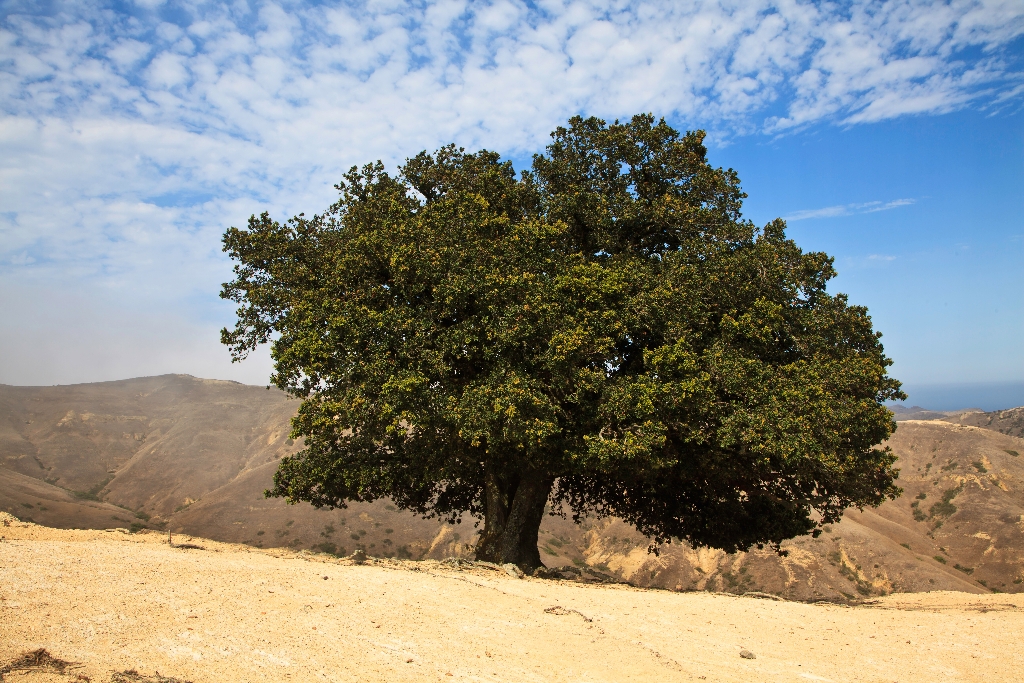
Island Plant Adaptations Guide Stop 3
There were no large herbivores (plant-eating animals) on the Channel Islands until the advent of ranching during the late 1800s. Prior to this time the largest land mammal found on the islands was the island fox. The introduction of many new animals and plants during the past 150 years made it difficult for native plants to survive and reproduce. Herbivores grazed on leafy plants and grasses, or browsed on the shoots of young shrubs and trees. Vigorous, nonnative grasses spread rapidly, outcompeting and replacing native plants.
Island oak, which exists only on the Channel Islands, is a prime example of a plant that was heavily impacted by nonnative species. Introduced species such as deer and elk browsed on the shoots of young trees, and feral pigs consumed the acorns. Annual grasses, introduced to the islands to provide pasture for sheep and cattle, formed a dense ground cover that robbed the soil of water and nutrients needed by oak seedlings. As a result of these factors, natural propagation of these trees remained rare. Today, however, with the removal of all nonnative animals from the islands, island oaks as well as other native plants are thriving again.
Is there something we missed for this itinerary?
Itineraries across USA


















































